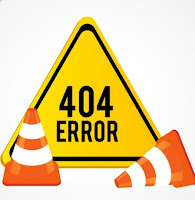Introduction:
Understanding HTTP protocol errors and their corresponding status codes is critical for a sysadmin navigating the complex web landscape. In this article, we will delve into the complexities of HTTP status codes, deciphering their meanings and implications for successful client requests, client request redirections, client request errors, and server errors.
1. Successful Client Requests:
When your client requests are successful, the server responds with a success code, confirming the completion of the requested action. These codes indicate that the client’s request was received, understood, and accepted.
- 200 OK: The standard response for a successful HTTP request.
- 201 Created: The request has been fulfilled, resulting in the creation of a new resource.
- 202 Accepted: The request has been accepted but not yet processed.
- 203 Non-Authorative Information: The server successfully processed the request but is returning information from another source.
- 204 No Content: The server fulfilled the request but does not need to return an entity-body.
- 205 Reset Content: The user should reset the document view.
- 206 Partial Content: The server is delivering only part of the resource due to a range header sent by the client.
2. Client Request Redirected:
Redirect codes inform the client that additional action is required to complete the request. These are situations in which a resource has moved, either permanently or temporarily.
- 300 Multiple Choices: The requested resource has multiple representations.
- 301 Moved Permanently: The requested resource has been permanently moved to another location.
- 302 Moved Temporarily: The requested resource resides temporarily under a different URI.
- 303 See Other: The response to the request can be found under a different URI.
- 304 Not Modified: The client’s cached copy is still valid, and there is no need to transfer the requested resource.
- 305 Use Proxy: The requested resource must be accessed through the proxy given by the Location field.
3. Client Request Errors:
These codes indicate that the client appears to have made an error in the request.
- 400 Bad Request: The request could not be understood or was missing required parameters.
- 401 Authorization Required: The request lacks valid authentication credentials.
- 403 Forbidden: The server understood the request but refuses to authorize it.
- 404 Not Found: The requested resource could not be found.
- 405 Method Not Allowed: The method specified in the request is not allowed.
- 406 Not Acceptable: The server cannot produce a response matching the list of acceptable values.
- 407 Proxy Authentication Required: The client must first authenticate itself with the proxy.
- 408 Request Timed Out: The server timed out waiting for the request.
- 409 Conflicting Request: The request could not be completed due to a conflict.
- 410 Gone: The requested resource is no longer available.
- 411 Content Length Required: The server requires a content-length in the request.
- 412 Precondition Failed: One or more conditions in the request header fields evaluated to false.
- 413 Request Entity Too Long: The server will not accept the request, exceeding a defined limit.
- 414 Request URI Too Long: The server will not accept the request, exceeding the URI length limit.
- 415 Unsupported Media Type: The server will not accept the request due to an unsupported media type.
4. Server Errors:
Server errors indicate that a valid request was not fulfilled by the server.500 Internal Server Error: A generic error message indicating an unexpected condition.
- 501 Not Implemented: The server does not support the functionality required to fulfill the request.
- 502 Bad Gateway: The server, while acting as a gateway or proxy, received an invalid response from the upstream server.
- 503 Service Unavailable: The server is currently unable to handle the request due to temporary overloading or maintenance.
- 504 Gateway Timeout: The server, while acting as a gateway or proxy, did not receive a timely response from the upstream server.
- 505 HTTP Version Not Supported: The server does not support the HTTP protocol version used in the request.
Conclusion:
Understanding these HTTP status codes in depth allows you to effectively troubleshoot issues and ensure smooth interactions between clients and servers. Stay tuned for more insights into the ever-changing world of web technologies, and feel free to peruse the rest of the Linux Guru website.
Tags: HTTP Status Codes, Web Development, System Administration, Tech Troubleshooting, HTTP Errors, Server Responses
